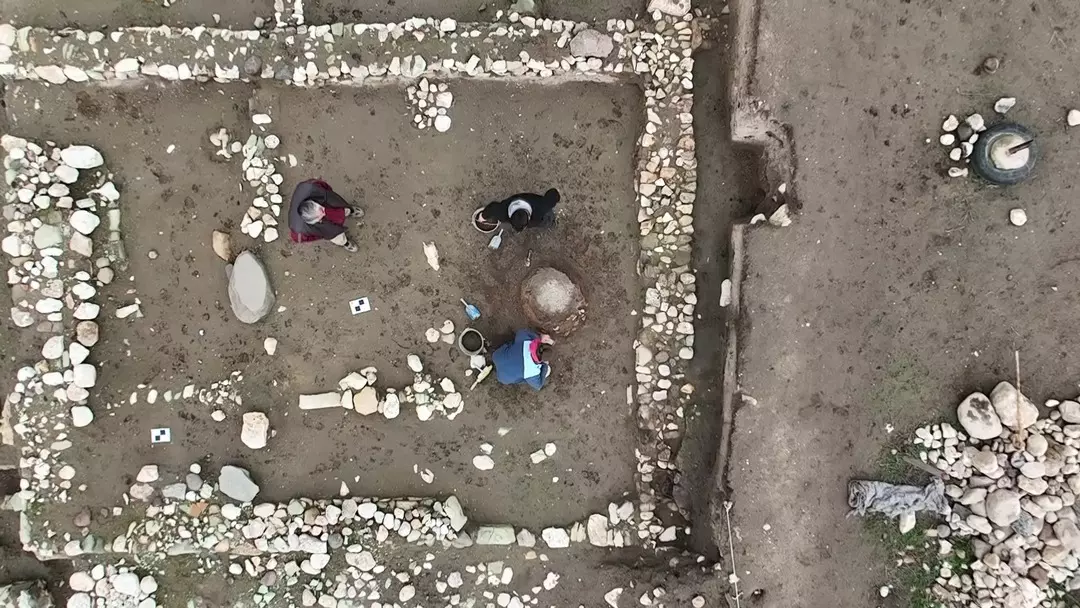Tucked away in the region of Serres, Northern Greece, the Alistrati Cave has welcomed more than a million visitors—both Greek and international—into its breathtaking depths. Often described as one of the planet’s underground marvels, it showcases extraordinary geological formations sculpted inch by inch over millions of years. These natural masterpieces leave guests awe-struck, especially when they discover that their journey through the cave begins not with a traditional guide, but with Persephone, the world’s only cave-based robot guide, fluent in 33 languages—including Ancient Greek and the regional dialect of Pontic Greek.
A Journey of Patience and Geological Artistry
The process of a single drop of water transforming into a stalactite or stalagmite is one of nature’s most poetic expressions of patience and persistence. Shaped by the slow passage of time and subtle geological forces, these formations often take centuries—even millennia—to develop. As Professor Nikos Kartalis, the cave’s scientific director and an economist at the University of Western Macedonia, puts it:
Nikos Kartalis, Scientific Director at the Alistrati Cave, pictured with Persephone, the robot tour guide
Photo: AMNA/Achilleas Chiras
“Every stalactite and stalagmite tells a story—one that reminds us of nature’s quiet yet relentless ability to create beauty.”
According to Kartalis, it takes about 40 days for a single drop of water to travel from the 40-meter-thick cave ceiling down to the ground. And to grow just one centimeter of a stalactite or stalagmite? That can take anywhere from 50 to 500 years.
Inside the Cave: A Living Museum Beneath the Earth
A Lego-built robot is programmed to give a tour on a tabletop map of the Alistrati Cave, as part of the site’s guided experience
Photo: AMNA/Achilleas Chiras
Located just six kilometers from the town of Alistrati, the cave stretches roughly three kilometers in length, with one kilometer accessible to visitors on guided tours lasting about an hour. The temperature inside remains a steady 18°C year-round—refreshingly cool in summer and comfortably warm in winter.
The cave is adorned with large stalactites and stalagmites in a range of colors, but what truly sets it apart are its eccentrics or helictites—rare formations that defy gravity with their twisting, seemingly impossible shapes.
“What makes the Alistrati Cave truly unique in Greece is its wide variety of eccentric formations,” notes Kartalis.
The cave is also home to microscopic life forms, including Alistratia Beroni, a one-of-a-kind isopod species measuring just 3 millimeters.
Persephone: The Robot Revolutionizing Cave Tours
Guiding visitors through the first 100 meters of the cave is Persephone, a robot developed by the Foundation for Research and Technology – Hellas (FORTH). Built entirely in Greece, both in hardware and software, Persephone can answer over 30 pre-set questions, providing a high-tech, multilingual introduction to the wonders of the cave. Its creation is part of the "i-cave" initiative—one of five steps in a broader digital transformation funded by the EU’s Interreg program.
But Persephone is just the beginning.
Stalactites inside the Alistrati Cave
Photo: AMNA/Achilleas Chiras
Visitors can now scan QR codes placed throughout the cave to access detailed geological information and even listen to the myth of Persephone’s abduction by Hades—in Ancient Greek, no less. The cave also offers 3D visualizations of its unique cave-dwelling species (including local bats and Alistrati Beroni), and a digital portrayal of its mythical inhabitant, the goddess Persephone.
Virtual Reality and the Future of the Alistrati Experience
The digital transformation doesn’t stop there. The Alistrati Cave is embracing Virtual Reality (VR), allowing visitors to explore areas of the cave that are inaccessible in person. There are also plans for educational robotics workshops where students can build and program miniature tour-guide robots to simulate Persephone’s path through a specially designed area.
Coming soon is a holographic installation of the goddess Demeter, Persephone’s mother, at the cave’s entrance. As visitors pass through the tunnel leading into the cave, the hologram will narrate the myth of Hades’ love for Persephone and her descent into the underworld—foreshadowing the ancient secrets hidden within the cave itself.
Nikos Kartalis, Scientific Director, presents an interactive virtual reality tour of the Alistrati Cave using a VR headset, as part of the site's guided experience in Alistrati
Photo: AMNA/Achilleas Chiras
A Model for Innovation and Sustainability
“With these developments, Alistrati Cave is not only a model of innovation and digital transformation for Greece’s caves—it’s setting an example for the world,” says Kartalis.
He emphasizes that technological advancements ensure both the site’s preservation and its ongoing appeal to new generations of explorers.
The Angitis Gorge Train: A Journey Through Prehistoric Art
Adjacent to the cave is the Angitis Gorge, once served by a tourist train that winds through the dramatic landscape. Though currently paused for infrastructure upgrades, it is set to resume in 2026. This unique experience begins and ends at the cave, taking passengers past prehistoric rock carvings that depict human activity and animal life from over 2,500 years ago. Along the way, guests may glimpse some of the gorge’s rare flora and fauna, including eagles, hawks, herons, and grey herons.











